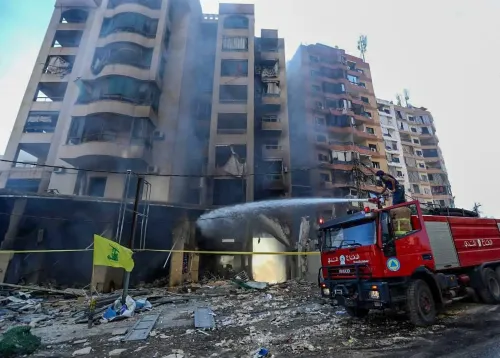What Happened in Guangzhou After the Landslide?

Synopsis
Key Takeaways
- The landslide in Guangzhou resulted in seven fatalities.
- Rescue efforts have concluded with the injured receiving medical care.
- Authorities are conducting safety inspections of affected structures.
- Ongoing cleanup and geological assessments are crucial in the aftermath.
- Potential typhoons and flooding are concerns for the region this month.
Guangzhou, Aug 8 (NationPress) - A tragic incident has resulted in seven confirmed fatalities due to a landslide triggered by heavy rainfall in Guangzhou, the capital of Guangdong Province in southern China. This unfortunate event occurred on Wednesday morning, as reported by local authorities on Friday.
The landslide struck around 8:30 a.m. in Dayuan Village, located in Baiyun District of Guangzhou, leading to 14 individuals being trapped and causing significant damage to several houses, according to the district's emergency management bureau.
Rescue efforts have since concluded. The remaining seven individuals sustained injuries and have been transported to the hospital. Fortunately, their conditions are stable, with three already discharged as per the bureau's statement, reported by Xinhua news agency.
Cleanup operations are currently underway, along with geological hazard risk assessments in both the affected and surrounding regions. Safety inspections and evaluations of local residential structures will be executed to facilitate subsequent actions.
On August 5, the Ministry of Emergency Management indicated that two to three typhoons were anticipated to impact China throughout August, as noted during a briefing by the national commission for disaster prevention, reduction, and relief.
One of these typhoons is expected to influence areas north of the Yangtze River, the briefing revealed.
Authorities noted that all seven major river basins in China have now entered the peak flood season for the year, with certain rivers in the Haihe River, Songhua River, and Liaohe River basins facing potential severe flooding risks.
Additionally, the threat of forest fires remains elevated in parts of the Greater Khingan Mountains, northern Xinjiang, central and southern China, and some southwestern regions.
Western Yunnan may experience a heightened risk of geological disasters, while areas along the middle and lower reaches of the Yangtze River, regions between the Yangtze River and Huaihe River, as well as parts of Xinjiang, are likely to face heatwaves and drought conditions, as outlined in the briefing.









